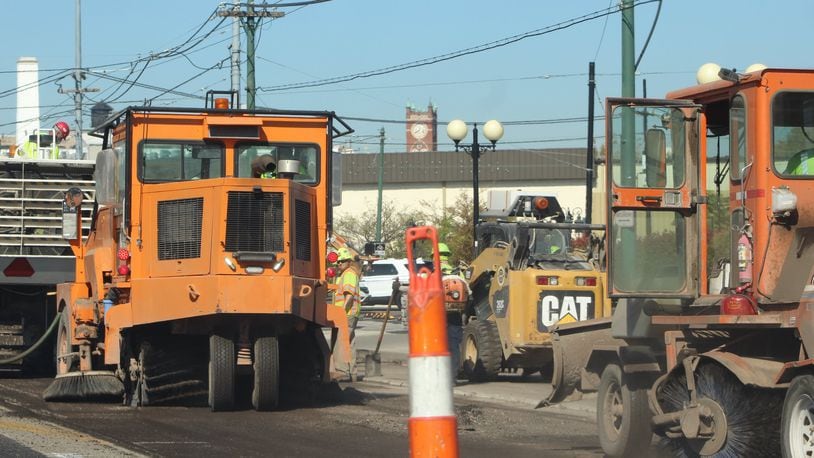“We’re only in our second year, so we still have a lot more paving to do,” Dayton Mayor Nan Whaley said. “I think our streets are getting better every year. At the end of eight years, we’ll be in good shape.”
RELATED: Bumpy ride: Which Dayton streets are in the worst condition?
Potholes and bumpy roads have been a common complaint in Dayton, and the pledge to improve street conditions was a key part of the 2016 levy campaign.
Before the election, Deputy City Manager Joe Parlette said increasing the city’s earnings tax from 2.25 percent to 2.5 percent would help expand city services, including the maintenance, repair and resurfacing of residential streets.
Parlette said at the time that the higher tax rate would allow the city to resurface about 60 percent of its residential streets over the eight-year levy period, meaning all residential roads would be in good condition by the time the tax hike expires.
The city paved about 19 lane miles in 2016, but upped that to 53 lane miles last year, public works data shows. The city estimates paving another 59 lane miles this year.
Spending on road surfacing and maintenance rose from about $1.6 million in 2016 — before the levy passage — to $5.1 million this year.
“If you drive the streets, you are really starting to notice some differences,” Diane Shannon, Dayton’s director of procurement, management and budget, said this month.
But so far, the amount of paving has fallen short of the city’s initial projections.
Shannon said the city’s original calculations were based on a residential lane mile inventory of 1,028 miles, which was adjusted to 901 miles when the city updated its inventory.
Inflation has also impacted bid prices for road projects in recent years as the price of asphalt has risen, reducing the number of lane miles that can be resurfaced, according to the city.
Asphalt prices increased from $68.82 per ton in 2017 to $76.24 in 2018.
Still, the city says it is on target to resurface between 55 and 60 percent of the roads by the time the levy expires, which would mean all residential streets would meet the industry standard of “satisfactory” condition by the end of the eight years.
City officials say resurfaced streets enhance property values and improve quality of life, safety and neighborhood aesthetics.
Nobody likes a bumpy ride, Fred Stovall, Dayton’s director of public works, said prior to the levy’s passage.
.
.
About the Author
